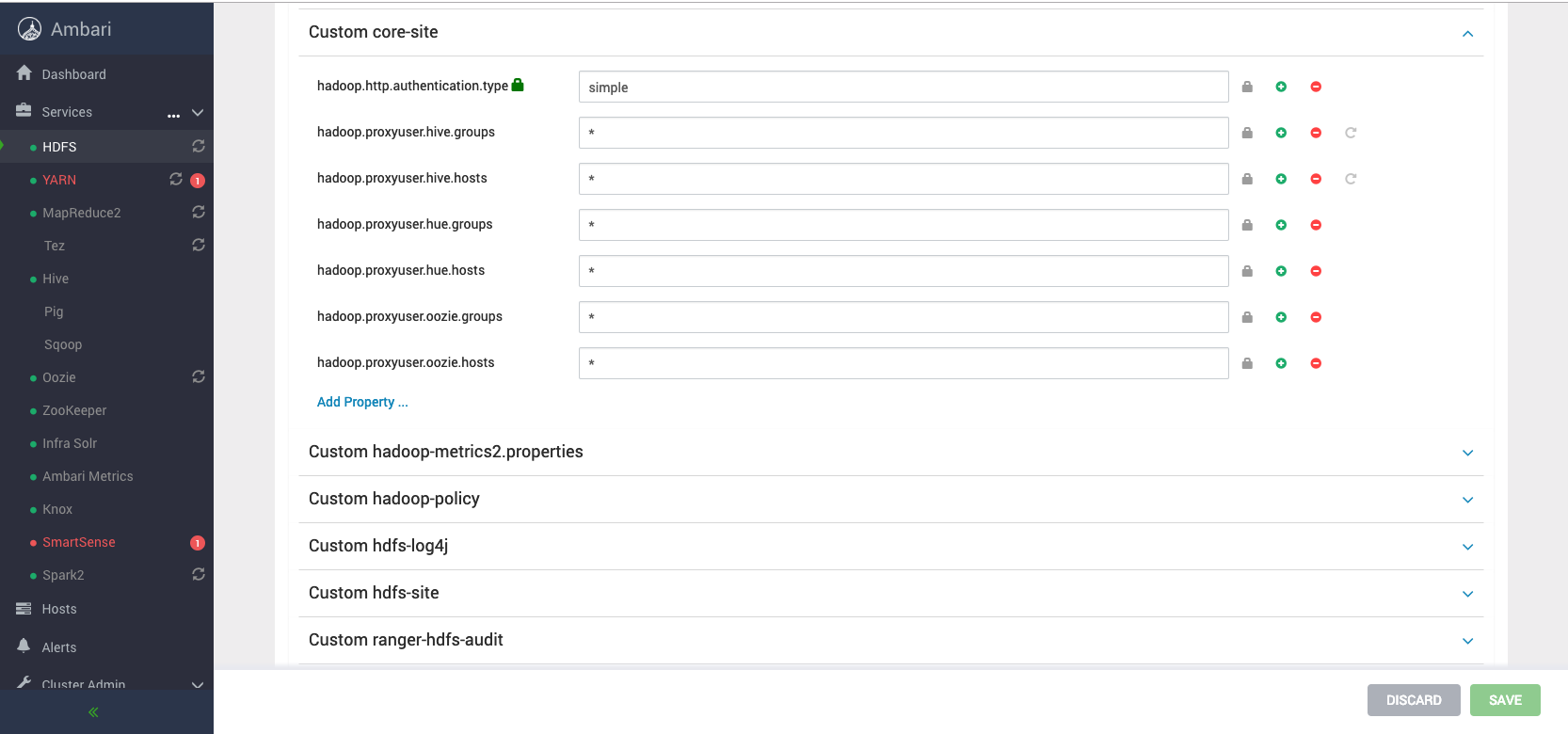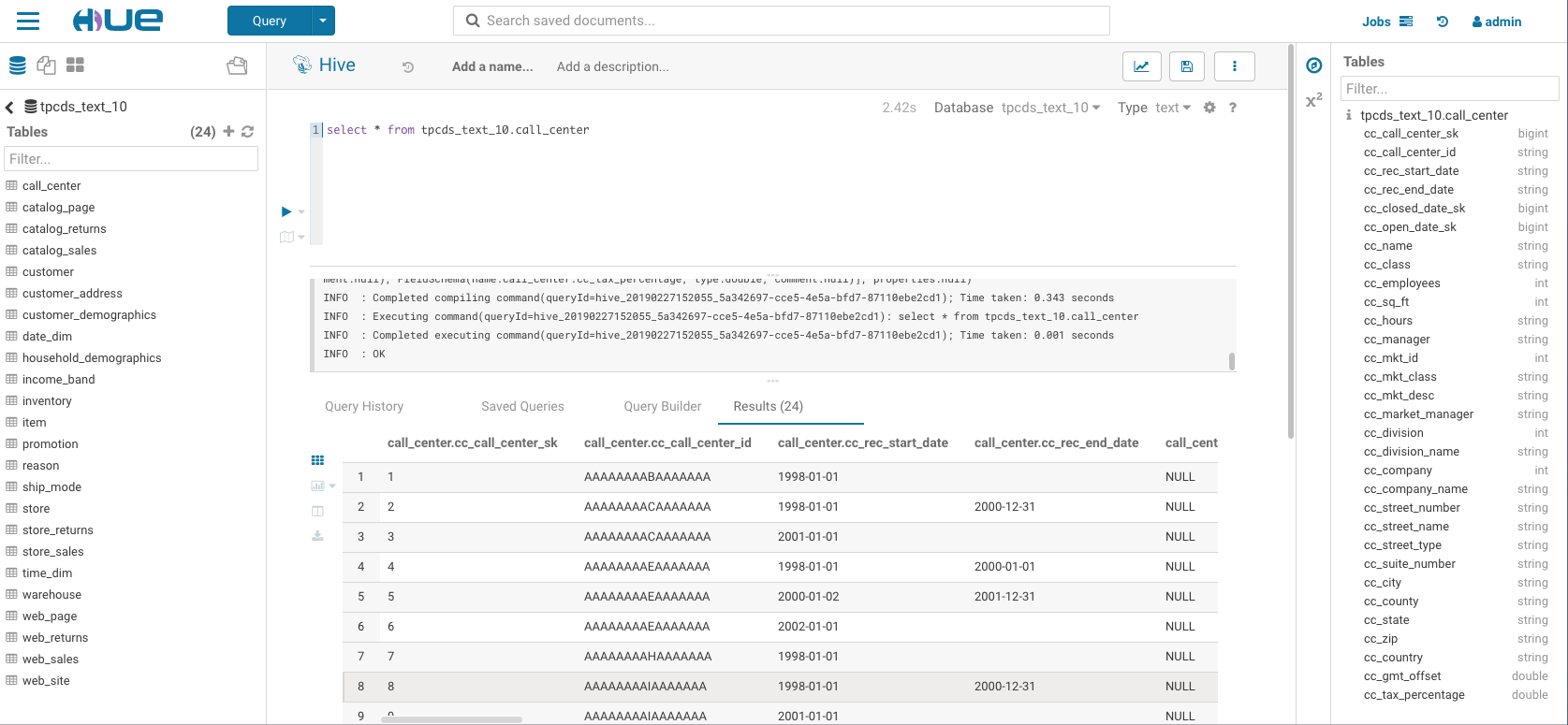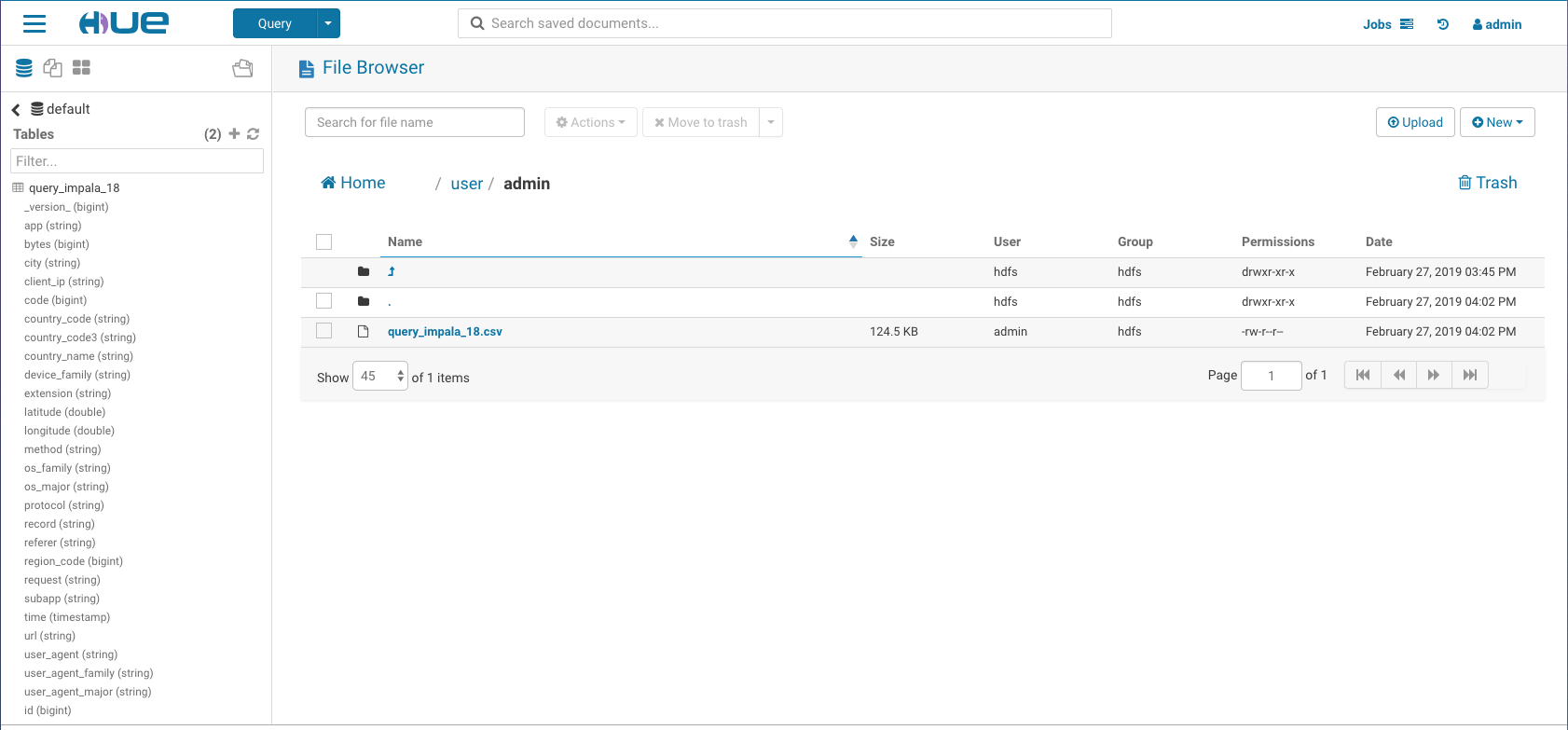---
title: Manually configure Hue in HDP
author: admin
type: post
date: 2019-03-02T06:29:46+00:00
url: /configure-ambari-hdp-with-hue/
sf_thumbnail_type:
- none
sf_thumbnail_link_type:
- link_to_post
sf_detail_type:
- none
sf_page_title:
- 1
sf_page_title_style:
- standard
sf_no_breadcrumbs:
- 1
sf_page_title_bg:
- none
sf_page_title_text_style:
- light
sf_background_image_size:
- cover
sf_author_info:
- 1
sf_social_sharing:
- 1
sf_related_articles:
- 1
sf_sidebar_config:
- left-sidebar
sf_left_sidebar:
- Sidebar-2
sf_right_sidebar:
- Sidebar-1
sf_caption_position:
- caption-right
sf_remove_promo_bar:
- 1
ampforwp-amp-on-off:
- default
categories:
- Version 4
---
Hello Big Data users,
if you have an Ambari managed HDP cluster, here is a guide of how test the latest Hue. Note that the guide focuses on the SQL Editor and HDFS Browser only and assumes a non-secure cluster setup.
**Step 1:**
On any host other than Ambari server, run following commands to [compile][1] the latest Hue and its dependencies:
yum install -y git
git clone https://github.com/cloudera/hue.git
sudo yum install -y ant asciidoc cyrus-sasl-devel cyrus-sasl-gssapi cyrus-sasl-plain gcc gcc-c++ krb5-devel libffi-devel libxml2-devel libxslt-devel make mysql mysql-devel openldap-devel python-devel sqlite-devel gmp-devel libtidy maven
Build:
cd hue
sudo make apps
**Step 2:**
Update Ambari Configurations
1. Go to `HDFS --> Configs --> Advanced` Scroll down to expand “Custom core-site”, then click on “Add Property…” to add “hadoop.proxyuser.hue.hosts:\*” and “hadoop.proxyuser.hue.groups:\*” then “Save” as following.[ ][2]
2. On Ambari UI check `YARN --> Config --> Advanced --> Advanced` yarn-site yarn.resourcemanager.webapp.address and add it in hue.ini
[
][2]
2. On Ambari UI check `YARN --> Config --> Advanced --> Advanced` yarn-site yarn.resourcemanager.webapp.address and add it in hue.ini
[ ][3]
3. On MySql server host usually host-1 create the Hue database:
][3]
3. On MySql server host usually host-1 create the Hue database:
ssh root@hue-1.example.com
mysql
create user 'hueuser'@'localhost' identified by 'huepassword';
create database huedb default character set utf8 default collate utf8_general_ci;
grant all on huedb.* to 'hueuser'@'%' identified by 'huepassword';
exit;
4. On hue host update the hue.ini with following values
ssh root@hue-2.example.com
vim ~/hue/desktop/conf/pseudo-distributed.ini
hue.ini
[beeswax]
max_number_of_sessions=2
[hadoop]
webhdfs_url=http://hue-1.example.com:50070/webhdfs/v1
resourcemanager_api_url=http://hue-1.example.com:8088
And run:
cd hue build/env/bin/hue syncdb
build/env/bin/hue migrate
build/env/bin/hue runcpserver
5. Go to the [hue-2.example.com:8888][4] to explore more and the [configuration page][5] for adding more components!
[ ][6]
[
][6]
[ ][7]
As always please feel free to comment and send feedback on the [hue-user][8] list or [@gethue][9]!
[1]: http://cloudera.github.io/hue/latest/admin-manual/manual.html
[2]: https://cdn.gethue.com/uploads/2019/02/Screen-Shot-2019-02-27-at-3.05.28-PM.png
[3]: https://cdn.gethue.com/uploads/2019/02/Screen-Shot-2019-02-27-at-3.10.39-PM.png
[4]: http://hue-2.example.com:8888
[5]: https://gethue.com/how-to-configure-hue-in-your-hadoop-cluster/
[6]: https://cdn.gethue.com/uploads/2019/02/HiveEditor.png
[7]: https://cdn.gethue.com/uploads/2019/02/fileBrowser.png
[8]: http://groups.google.com/a/cloudera.org/group/hue-user
[9]: https://twitter.com/gethue
][7]
As always please feel free to comment and send feedback on the [hue-user][8] list or [@gethue][9]!
[1]: http://cloudera.github.io/hue/latest/admin-manual/manual.html
[2]: https://cdn.gethue.com/uploads/2019/02/Screen-Shot-2019-02-27-at-3.05.28-PM.png
[3]: https://cdn.gethue.com/uploads/2019/02/Screen-Shot-2019-02-27-at-3.10.39-PM.png
[4]: http://hue-2.example.com:8888
[5]: https://gethue.com/how-to-configure-hue-in-your-hadoop-cluster/
[6]: https://cdn.gethue.com/uploads/2019/02/HiveEditor.png
[7]: https://cdn.gethue.com/uploads/2019/02/fileBrowser.png
[8]: http://groups.google.com/a/cloudera.org/group/hue-user
[9]: https://twitter.com/gethue
 ][2]
2. On Ambari UI check `YARN --> Config --> Advanced --> Advanced` yarn-site yarn.resourcemanager.webapp.address and add it in hue.ini
[
][2]
2. On Ambari UI check `YARN --> Config --> Advanced --> Advanced` yarn-site yarn.resourcemanager.webapp.address and add it in hue.ini
[ ][3]
3. On MySql server host usually host-1 create the Hue database:
][3]
3. On MySql server host usually host-1 create the Hue database:
 ][6]
[
][6]
[ ][7]
As always please feel free to comment and send feedback on the [hue-user][8] list or [@gethue][9]!
[1]: http://cloudera.github.io/hue/latest/admin-manual/manual.html
[2]: https://cdn.gethue.com/uploads/2019/02/Screen-Shot-2019-02-27-at-3.05.28-PM.png
[3]: https://cdn.gethue.com/uploads/2019/02/Screen-Shot-2019-02-27-at-3.10.39-PM.png
[4]: http://hue-2.example.com:8888
[5]: https://gethue.com/how-to-configure-hue-in-your-hadoop-cluster/
[6]: https://cdn.gethue.com/uploads/2019/02/HiveEditor.png
[7]: https://cdn.gethue.com/uploads/2019/02/fileBrowser.png
[8]: http://groups.google.com/a/cloudera.org/group/hue-user
[9]: https://twitter.com/gethue
][7]
As always please feel free to comment and send feedback on the [hue-user][8] list or [@gethue][9]!
[1]: http://cloudera.github.io/hue/latest/admin-manual/manual.html
[2]: https://cdn.gethue.com/uploads/2019/02/Screen-Shot-2019-02-27-at-3.05.28-PM.png
[3]: https://cdn.gethue.com/uploads/2019/02/Screen-Shot-2019-02-27-at-3.10.39-PM.png
[4]: http://hue-2.example.com:8888
[5]: https://gethue.com/how-to-configure-hue-in-your-hadoop-cluster/
[6]: https://cdn.gethue.com/uploads/2019/02/HiveEditor.png
[7]: https://cdn.gethue.com/uploads/2019/02/fileBrowser.png
[8]: http://groups.google.com/a/cloudera.org/group/hue-user
[9]: https://twitter.com/gethue